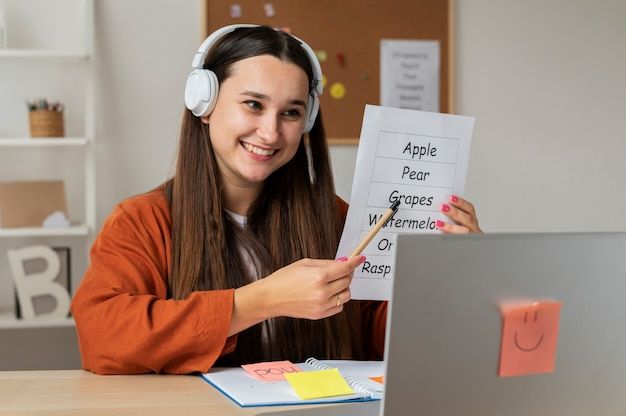Global Opportunities: Visa Sponsorship for Teachers and Educators
In today’s increasingly interconnected world, the demand for qualified teachers and educators is growing exponentially, prompting many nations to introduce visa sponsorship programs to attract global talent. This article explores the vast global opportunities available for educators seeking visa sponsorship, outlines the processes involved, and provides practical guidance to help professionals navigate the complex landscape of international teaching careers. With a focus on international education, this comprehensive guide examines trends, challenges, and step-by-step strategies that will empower teachers to expand their career horizons. Throughout this discussion, we will also reference key topics in related visa categories to offer additional context for those interested in related migration options—for instance, Understanding the UK’s Skilled Worker Visa Points-Based System.
The Growing Demand for Educators Internationally
Across the globe, many countries are experiencing a critical shortage of qualified educators. This shortage is fueled by a combination of demographic shifts, evolving educational standards, and government initiatives to improve teaching quality. As a result, educators with specialized skills are increasingly in demand. Countries such as Canada, the United Kingdom, Australia, and several others are actively recruiting international teaching professionals to fulfill strategic educational goals.
Results
#1. What is your gender?
#2. Do you prefer working remotely or in an office setting?
#3. What type of part-time job would you like to do?
#4. What type of scholarship are you looking for?
#5. How much would you like to earn per hour?
#6. Do you have a visa for your destination country?
#7. Are you open to relocating for work or studies?
Many host countries are streamlining visa sponsorship processes for educators, recognizing that bringing in global expertise can elevate the quality of education and help in multicultural classroom settings. For example, the proficiency requirements and classroom experience that qualified teachers bring are significant assets in today’s competitive academic environment. In some instances, the process has parallels with other skilled professions. One notable example is High-Demand Occupations for Visa Sponsorship under Canada’s Express Entry, which emphasizes the need for specialized skills and experience.
Visa Sponsorship Process for Teachers and Educators
Navigating the visa sponsorship landscape can be daunting, but with adequate preparation and a clear understanding of the procedures, the process becomes manageable. Teachers interested in global opportunities must be well-versed in the specific requirements that each country mandates. These often include evidence of teaching certification, proof of work experience, and sometimes even specialized training in curriculum development or special education.
In addition to meeting education and experience benchmarks, applicants must also provide detailed documentation to support their application. This may include transcripts, letters of recommendation, and professional licenses. Each host country may have distinct preferences regarding which documents are most crucial for evaluating an educator’s credentials. For instance, some countries may require a standardized teaching certificate alongside other professional documents, making it vital for applicants to be meticulous in preparing their portfolios. A great resource for understanding such processes is Leveraging Recruitment Agencies to Find Visa Sponsorship Jobs Overseas.
Country-Specific Opportunities and Global Trends
The international education sector has seen a marked increase in mobility, partly driven by strategic government policies that address both domestic shortages and the need for cultural exchange in the classroom. Countries with robust education systems often provide attractive incentives such as streamlined visa processes, permanent residency pathways, and competitive salary packages to lure top teaching talent.
For example, regions in North America have developed clear tracks from work visas to permanent residency for educators. These tracks are designed not only to attract talent but also to retain it, ensuring that international professionals can integrate into the broader education system effectively. This seamless transition is crucial in building a stable, experienced workforce that can contribute to long-term educational development. Another insightful comparison can be drawn with From Work Visa to Permanent Residency: Long-Term Pathways.
Comparative Tables of Related Visa Topics
To help educators and migration enthusiasts gain a broader perspective on various visa pathways, the following tables present a detailed categorization of topics related to marriage-based visas, student & work visas, and specialized work and global mobility options. These tables offer a structured insight into different visa sponsorship categories, complementing the discussion on teacher sponsorship.
Table Category 1: Marriage-Based Visa Considerations
| Description | Topic | |
|---|---|---|
| Comparison of visa types for couples, outlining eligibility and benefits. | Fiancé(e) Visa vs. Spousal Visa | |
| A comprehensive list of required documents for marriage-based visa applications globally. | Essential Documentation for Marriage-Based Visas Worldwide | |
| Tips and strategies to prepare for the often rigorous interview process in the USA. | Navigating the Marriage-Based Green Card Interview | |
| Guide on transitioning from conditional to permanent residency following marriage. | Conditional Residency Through Marriage | |
| Explanation of how changes in personal relationships may affect immigration status. | Impact of Separation/Divorce on Your Marriage-Based Immigration Status | |
| Detailed overview of financial criteria imposed on applicants. | Financial Sponsorship Requirements for Spousal Visa | |
| Information on visa options and legal recognition for same-sex couples. | Same-Sex Marriage Immigration | |
| Best practices for ensuring that the marriage component of your visa application is legitimate. | Avoiding Marriage Fraud Accusations in Your Immigration Application | |
| Guidance for including children in marriage-based visa applications. | Bringing Dependent Children Through Marriage-Based Immigration | |
| An overview of frequent mistakes made during the visa application process and how to avoid them. | Common Pitfalls in Marriage Visa Applications |
Table Category 2: Student and Work Visa Pathways
| Description | Topic | |
|---|---|---|
| An analysis of the process leading from student visas to long-term residency. | Pathway from Student Visa to Permanent Residency After Graduation | |
| Tips on managing studies and work abroad as an international student. | $60k Part-Time Work Opportunities While on a Student Visa | |
| How to obtain sponsorship for internships that pave the way for full-time opportunities. | Securing Visa Sponsorship for International Internships | |
| Explore how community colleges can be stepping stones for international students. | Community Colleges as a Gateway to University and Residency | |
| Essential information on language tests required for visa applications. | Meeting English Proficiency Requirements | |
| Comparative insights into post-study work options worldwide. | Post-Study Work Visas: A Global Comparison | |
| Discover emerging destinations with affordable education options and robust visa programs. | Under-the-Radar Countries with Excellent Scholarship Programs | |
| Common pitfalls in student visa applications with strategies to overcome them. | Top Reasons for Student Visa Rejections | |
| A guide to navigating health insurance options while studying abroad. | Health Insurance Essentials for International Students | |
| Step-by-step guidance for renewing your student visa when necessary. | Extending Your Study Permit/Student Visa |
Table Category 3: Specialized Work and Global Mobility Options
| Description | Topic | |
|---|---|---|
| Identifies critical professions in demand for Canadian immigration. | High-Demand Occupations for Visa Sponsorship | |
| Detailed explanation of the UK’s points-based evaluation for skilled workers. | Understanding the UK’s Skilled Worker Visa Points-Based System | |
| Insights into opportunities for transferring within multinational organizations. | Intra-Company Transfer Visas | |
| Explore visas that allow for a blend of work experience and cultural immersion. | Working Holiday Visas | |
| How professional recruiters can assist in securing sponsorship opportunities. | Leveraging Recruitment Agencies | |
| A look at visa programs dedicated to innovative and entrepreneurial talent. | Startup Visa Programs for Entrepreneurs | |
| Explains the criteria and importance of labour market tests in visa approvals. | Understanding Labour Market Tests | |
| Essential guidelines for professionals considering a job switch under sponsorship. | Changing Jobs While Holding a Sponsored Work Visa | |
| Pathways that allow professionals to transition from temporary work visas to permanent residency. | From Work Visa to Permanent Residency |
These tables serve as a quick reference and an integrated guide to the numerous visa sponsorship avenues, offering a broader spectrum of opportunities beyond the education sector. They also underscore the similarities and differences among various visa types, which can be invaluable for educators considering international careers alongside other professional pathways.
Challenges and Considerations in the Visa Sponsorship Process
While the prospect of teaching abroad is alluring, navigating the visa sponsorship process requires careful preparation, patience, and attention to detail. Common challenges include understanding varying immigration laws, dealing with bureaucratic delays, and ensuring that every aspect of one’s application is error-free. These challenges are not unique to educators, but in the competitive world of global education, even small oversights can delay a promising opportunity.
For instance, educators must often prove their language proficiency, teaching credentials, and professional experience. Comprehensive documentation is crucial, and it may even include background checks or verification of previous employment. It is important to pay attention to these finer points, as they can significantly influence the outcome of your application. A related insight into the overall process can be found in Leveraging Recruitment Agencies to Find Visa Sponsorship Jobs Overseas.
Step-by-Step Guidance for a Successful Sponsorship Application
A systematic approach is key to obtaining visa sponsorship for international educators. This section provides a step-by-step guide outlining best practices for ensuring a smooth application process:
1. Research and Identify Opportunities
Educators should begin by extensively researching potential host countries and understanding their education systems, eligibility criteria, and application timelines. Government and educational institution websites are good starting points for verifying requirements and available sponsorship options. Engaging in online forums and professional networks can also offer insights from peers who have successfully navigated the process.
2. Gather Comprehensive Documentation
Once an opportunity is identified, the next step is to compile all necessary documents. This may include academic transcripts, teaching certificates, letters of reference, and proof of language proficiency. Given the importance of English proficiency in many host countries, teachers must ensure they meet the minimum standards required by immigration authorities. For an in-depth look at language requirements, refer to Meeting English Proficiency Requirements (IELTS/TOEFL) for Visas & Scholarships.
3. Application Preparation and Submission
With documents in hand, carefully fill out the necessary application forms. Double-check each entry for accuracy. Many countries now offer online submission portals, which can streamline the process and reduce mailing delays. Always retain copies of submitted documents and confirmation receipts for future reference.
4. Preparing for Interviews and Follow-Ups
Should the process require an interview, thorough preparation is essential. Practice common questions, gather additional supporting evidence if needed, and be ready to discuss your teaching philosophy, classroom management strategies, and the reasons for choosing a particular country. Research suggests that confidence and clarity during interviews can significantly affect the final decision on visa applications.
5. Post-Approval: Settlement and Integration
After approval, be prepared for the challenges of settling into a new cultural and educational environment. Orientation programs, language courses, and community support services can play a significant role in ensuring a smooth transition.
Each of these steps requires careful planning and execution, and even a minor oversight can result in delays. Therefore, meticulous preparation is not just recommended—it’s critical for long-term success in achieving your international teaching goals.
Preparing for an International Teaching Career
When considering an international teaching career, educators must be ready for a period of adjustment and continuous professional development. This process often includes not only meeting visa requirements but also adapting pedagogical practices to suit diverse cultural contexts. Educational systems around the world vary in terms of curriculum, student engagement, and technological integration. As teachers enter new environments, they must be ready to learn and adapt quickly.
Many host countries offer orientation sessions or professional development programs specifically designed for internationally recruited teachers. These programs provide valuable training, enabling educators to better understand local educational expectations and integrate smoothly into the academic community.
While professional development is a continuous process, securing visa sponsorship is only the first step. Long-term career success also depends on the teacher’s ability to collaborate, innovate, and contribute to the local educational landscape. For an additional perspective on career advancement after your initial visa sponsorship, consider exploring From Work Visa to Permanent Residency: Long-Term Pathways.
The Impact of Global Opportunities on Educators
The globalization of education has not only expanded the career prospects for teachers but also enriched educational systems worldwide. International educators bring diverse perspectives, innovative teaching methodologies, and cultural insights that enhance the learning environment. In multicultural classrooms, students benefit from exposure to different viewpoints and teaching styles, preparing them for success in a globalized economy.
Visa sponsorship programs are pivotal in enabling this exchange. These programs not only facilitate the mobility of educators but also foster international cooperation and understanding. The skills and experiences that teachers accumulate abroad can have a transformative effect on their home countries upon their return, contributing to a cycle of continuous educational improvement and innovation.
One critical aspect of global mobility is the ability to leverage digital platforms and online educational resources. This trend has been further accelerated by the global shift to remote learning, where educators are increasingly participating in international training programs and virtual classrooms. Such developments underscore the multifaceted advantages of pursuing international teaching opportunities, extending far beyond the classroom. A related discussion on global mobility is available in Securing Visa Sponsorship for International Internships.
Overcoming Common Obstacles in the Visa Sponsorship Journey
While the opportunities are significant, the journey toward visa sponsorship is not without its challenges. Common obstacles include stringent documentation requirements, fluctuating immigration policies, and the risk of application errors. For many teachers, the complexity of filling out forms, preparing supporting evidence, and navigating country-specific processes can be overwhelming. Yet, these challenges also present opportunities for growth and professional development.
To overcome these obstacles, it is important to remain proactive, seek expert advice, and join communities of educators who have successfully navigated the process. Many online platforms and forums provide firsthand accounts of the visa application journey, offering support, tips, and encouragement. Peer support and professional networks are invaluable assets when facing bureaucratic complexities. For more insights into avoiding pitfalls in application processes, review Common Pitfalls in Marriage Visa Applications and How to Steer Clear.
The Future of Global Teacher Mobility
The future of global teacher mobility looks promising, with emerging markets and progressive policies paving the way for more inclusive and accessible visa sponsorship options. In the wake of rapid technological advancements, the traditional classroom is evolving, and the role of educators is shifting to incorporate digital literacy, global citizenship, and blended learning techniques. These trends are creating a fertile environment for innovative educational practices and expanding opportunities for teachers to reach international audiences.
Moreover, governments and educational institutions are increasingly recognizing that investing in international talent yields long-term benefits—not just for local communities, but for global educational standards. This acknowledgment is leading to more flexible visa policies, enhanced support systems for incoming educators, and dedicated professional development programs that foster cross-cultural exchange.
As new trends emerge, educators must stay informed about policy changes and evolving requirements. Continuous professional learning and networking are critical to leveraging these opportunities effectively. For those looking to gain insights into future trends, Intra-Company Transfer Visas: Moving Globally Within Your Company offers perspectives on navigating global mobility across various sectors.
Final Thoughts
Navigating visa sponsorship for teachers and educators offers a pathway not only to broaden individual career prospects but also to enrich educational systems worldwide. With increasing global demand for quality educators, understanding the nuances of international visa applications is essential. From thorough preparation of documentation to adapting teaching practices in a multicultural environment, each step of the journey plays a critical role in securing global opportunities.
Educational professionals seeking to expand their horizons must approach the process with diligence, leveraging all available resources—from structured visa application guides and comparative tables to professional networks and online communities. The comprehensive tables provided in this article serve as a valuable resource for comparing various visa pathways, ensuring that educators can identify the opportunities that best align with their career goals.
By embracing these opportunities, teachers are not only advancing their own careers but are also contributing to a global exchange of knowledge, fostering innovative learning environments, and nurturing the leaders of tomorrow. For further insights and continuous updates on global visa sponsorship programs, educators are encouraged to explore additional resources and stay engaged with policy updates.
In summary, the journey toward global teaching opportunities is marked by challenges, detailed requirements, and the need for continuous professional growth. However, with the right information and a proactive approach, securing visa sponsorship can pave the way for a rewarding international career. The benefits are far-reaching, impacting the lives of both educators and students, and fostering a dynamic and culturally enriched educational landscape.
Teachers and educators looking to embark on this international journey should remember that every step—from research to application submission and final approval—is part of a larger process of building a globally connected career. Stay informed, prepare meticulously, and let the global opportunities for visa sponsorship serve as your gateway to new horizons in the world of education.
By embracing the wealth of opportunities available today, international educators can transform challenges into stepping stones toward a prosperous future. Whether you are at the beginning of your teaching career or seeking a new international challenge, the world is waiting for your expertise and passion. Let your dedication to education resonate across borders and inspire change, one classroom at a time.
For further reading and additional insights on the nuances of visa sponsorship, consider exploring resources such as Post-Study Work Visas: A Global Comparison for International Graduates. This resource offers a broader perspective on how educational qualifications can open doors to long-term global opportunities—a reminder that the pursuit of knowledge knows no boundaries.









